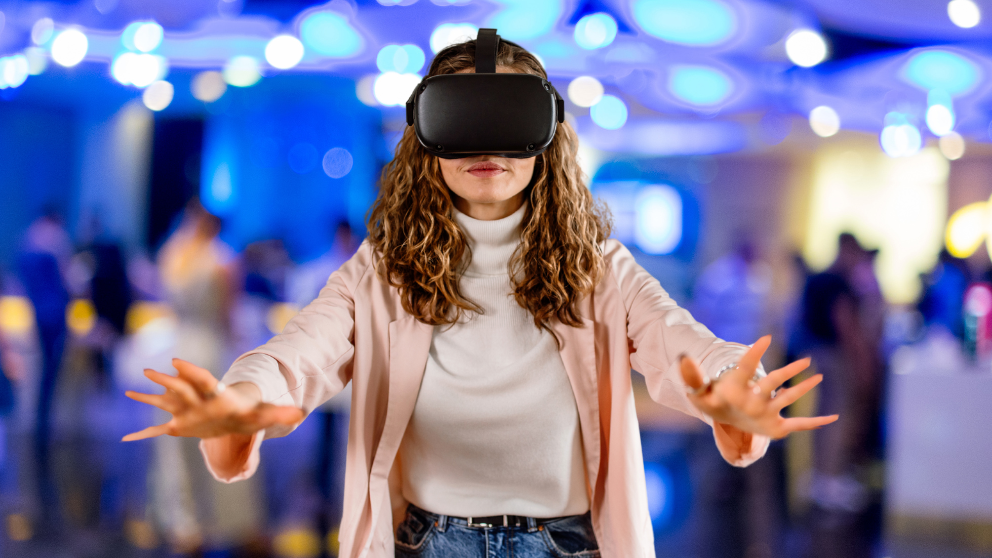What is gamification and why is it powerful in marketing?
The gamificationis the art of integrating game mechanics into areas that are not, on the face of it, playful, such as marketing and customer relations. Its aim? To make experiences more fun, stimulating and engaging by drawing on the psychological motivations of games. Points, badges, challenges, competition... Gamification exploits our innate love of games and rewards to motivate us to take action.
In an ultra-connected world where consumer attention is a rare commodity, gamification offers brands a highly effective way of standing out and creating memorable interactive experiences. By triggering intrinsic motivation in users, it generates a deeper and more lasting commitment to the brand.
There are many benefits to gamification in marketing:
- It significantly increases engagement by encouraging consumers to actively interact with the brand through fun challenges.
- It boosts loyalty by nurturing a sense of progress and achievement that strengthens the emotional bond with the brand.
- It gathers valuable data on customer preferences and behaviour, which can then be used to personalise the experience.
Case studies: brands that have successfully gamified their marketing
Nike, Starbucks, McDonald's... Many iconic brands have already tried their hand at gamified marketing. Here's a look back at some of the most memorable campaigns to help you understand the keys to effective gamification:
Nike+: gamification at the service of sports performance
With its Nike+ application, the sports equipment manufacturer has literally gamified running. Users can track their performance, challenge friends and unlock rewards. The result? A tenfold increase in brand engagement and long-term athlete loyalty. Nike+ shows how gamification can transform a solitary activity into an addictive social experience.
Starbucks Rewards: stars and tempting rewards
Starbucks' loyalty programme is a model of its kind. Each purchase earns stars, which are used to upgrade status (Green, Gold, etc.) and unlock rewards such as free drinks. It's a clever system that encourages regular consumption and reinforces the feeling of belonging to the brand. With Rewards, Starbucks has succeeded in turning loyalty into a real game.
Beyond these well-known examples, gamification is proving its worth in a variety of sectors, from retail to banking and the media. What successful campaigns have in common is that they set motivating objectives, offer immediate feedback and attractive rewards, while leveraging social benefits (competition, peer recognition). A winning recipe that needs to be adapted to your audience to create commitment.
How can gamification be integrated into your marketing strategy?
Are you convinced by the potential of gamification but don't know where to start? Here's a 3-step roadmap to get you started:
1. Define the objectives of your gamified campaign
It all starts with defining clear marketing objectives: recruiting new customers, retaining existing ones, increasing the frequency of purchases, generating buzz... This is the direction that will guide the entire design of your game mechanics. Your KPIs will flow naturally from these objectives (new subscribers, re-purchase rate, average basket, social shares, etc.).
2. Design a game mechanic tailored to your target audience
The effectiveness of gamification depends on a detailed understanding of the audience's motivations. A female audience will not respond to the same levers as a teenage audience, for example. Competition addicts will adhere to a ranking system, while others will prefer collaboration. Survey your target audience to identify their motivations, then design your game accordingly. The balance between challenge and reward is essential.
3. Measure and continuously optimise your gamified system
Once you've launched your operation, it's time to measure it. Closely monitor your KPIs to assess the performance of your gamified system against your initial objectives. Analyse user behaviour in detail (frequency of play, completion rates, abandonment rates, etc.) to identify friction points. Don't hesitate to adjust your mechanics along the way depending on the results and customer feedback. Gamification requires continuous monitoring!
Pitfalls to avoid in responsible gamification marketing
While gamification is a fantastic tool, it can also backfire if brands misuse it. Here are the mistakes to avoid:
- Forget the user experience gamification should improve the customer experience, not complicate it! Make sure your mechanics remain simple and intuitive.
- Offering disconnected rewards To be motivating, rewards need to have value in the eyes of users. Be generous!
- Unbalancing challenge and success Too hard and your game will discourage you. Too easy and you'll get bored. Find the right balance to maintain commitment over time.
- Undermining ethics and transparency Don't let gamification become manipulation. Be transparent about the use of data and responsible in your mechanics.
The future of marketing gamification: ever more immersion and personalisation!
Tomorrow, technological advances (virtual and augmented reality, artificial intelligence, etc.) will open up exciting new possibilities for immersing consumers even further in fun and engaging brand experiences. Data and AI will make it possible to further personalise the mechanics based on the profile and actions of each user.
In the future, we can bet that the real and the virtual will become increasingly intertwined, with gamified devices seamlessly integrated throughout the customer journey. The boundaries between gaming and brand experience will become more porous. In this new paradigm, retailers will have to redouble their creativity in their use of gamification to surprise and engage their audiences over the long term.
Gamification, a win-win situation for brands and consumers
More than just a marketing trend, gamification is becoming a must for brands looking to reinvent their customer relationships. By harnessing the power of game mechanics, gamification creates a win-win situation:
- For the consumersIt makes brand experiences more fun, engaging and emotionally rewarding.
- For the brandsIt boosts engagement and loyalty while offering a wealth of consumer insights.
So, are you ready to capitalise on gamification marketing to open up new opportunities for your brand?
The die is cast! Now it's your turn, by contacting us ! 🎲




